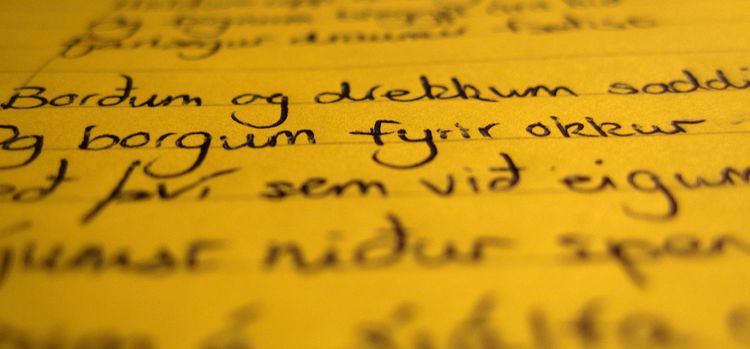 | ||
Eth (/ɛð/, uppercase: Ð, lowercase: ð; also spelled edh or eð) is a letter used in Old English, Middle English, Icelandic, Faroese (in which it is called edd), and Elfdalian. It was also used in Scandinavia during the Middle Ages but was subsequently replaced with dh and later d. It is often transliterated as d (and d- is rarely used as a mnemonic). The lowercase version has been adopted to represent a voiced dental fricative in the International Phonetic Alphabet.
In Old English, ð (called ðæt by the Anglo-Saxons) was used interchangeably with þ to represent the Old English dental fricative phoneme /θ/, which exists in modern English phonology as the voiced and voiceless dental fricatives now spelled 'th'.
Unlike the runic letter þ, ð is a modified Roman letter. ð was not found in the earliest records of Old English. A study of Mercian royal diplomas found that ð (along with đ) began to emerge in the early 8th century, with ð becoming strongly preferred by the 780s. Another source indicates that the letter is 'derived from Irish writing.'
The lowercase version has retained the curved shape of a medieval scribe's d, which d itself in general has not. ð was used throughout the Anglo-Saxon era but gradually fell out of use in Middle English, practically disappearing altogether by 1300; þ survived longer, ultimately being replaced by the digraph th.
In Icelandic, ð represents a (usually apical) voiced alveolar non-sibilant fricative [ð̠], similar to the th in English that, but it never appears as the first letter of a word, where þ is used in its stead. The name of the letter is pronounced in isolation (and before words beginning with a voiceless consonant) as [ɛθ̠] and therefore with a voiceless rather than voiced fricative.
In Faroese, ð is not assigned to any particular phoneme and appears mostly for etymological reasons; however, it does show where most of the Faroese glides are; when ð appears before r, it is, in a few words, pronounced [ɡ]. In the Icelandic and Faroese alphabets, ð follows d.
In Olav Jakobsen Høyem's version of Nynorsk based on Trøndersk, ð was always silent and was introduced for etymological reasons.
Ð has also been used by some in written Welsh to represent /ð/, which is normally represented as dd.
